Vue.js (simply, “Vue”) is an open-source JavaScript framework for building user interfaces. It’s a progressive framework that’s accessible, adaptable, and performant.
Vue is one of the most popular frontend frameworks in use today, with a vibrant ecosystem of third-party libraries and tools that speed the development of Vue applications. This article looks at 10 Vue component libraries you might consider for your next Vue project.
What Is a Vue Component Library?
One of the features of Vue applications is that they are built with components — self-contained modules with markup, styles, and logic bundled within them.
Vue component libraries are collections of reusable building blocks for Vue applications. These libraries provide pre-built base components (like buttons, forms, inputs, cards, and so on) that you can integrate easily into your projects.
Using a component library helps ensure a consistent UI experience within an app while saving you the time and effort needed to build and maintain these components yourself.
Vue Component Libraries vs Frameworks
Some of the libraries we discuss below are more commonly considered Vue frameworks rather than Vue libraries. This distinction may seem trivial, but there are important differences.
For starters, component libraries are often smaller, while frameworks can be much larger. UI frameworks and component libraries both provide collections of Vue components. However, frameworks may also impose their own structure on a Vue application. In contrast, component libraries provide individual components without emphasizing how an application should be built or structured.
Our Picks: Top Vue Component Libraries (and Some Frameworks)
When creating our list of the best Vue component libraries, we searched for libraries that met the following criteria:
- It must be maintained and consistently updated.
- It must offer several different components so that the library is helpful across different use cases.
- It must offer clear, accessible documentation that includes examples.
- It must be well-received and used by Vue developers.
We also considered other factors, such as performance, ease of use, and customization options.
Now, let’s get into our top picks for Vue component libraries.
1. Bootstrap Vue
Bootstrap Vue is a Vue implementation of the Bootstrap frontend toolkit and is one of the most popular UI frameworks for building responsive, mobile-first sites. Bootstrap Vue provides a whopping 85 components, more than 45 available plugins, and more than 1,200 icons right out of the box.
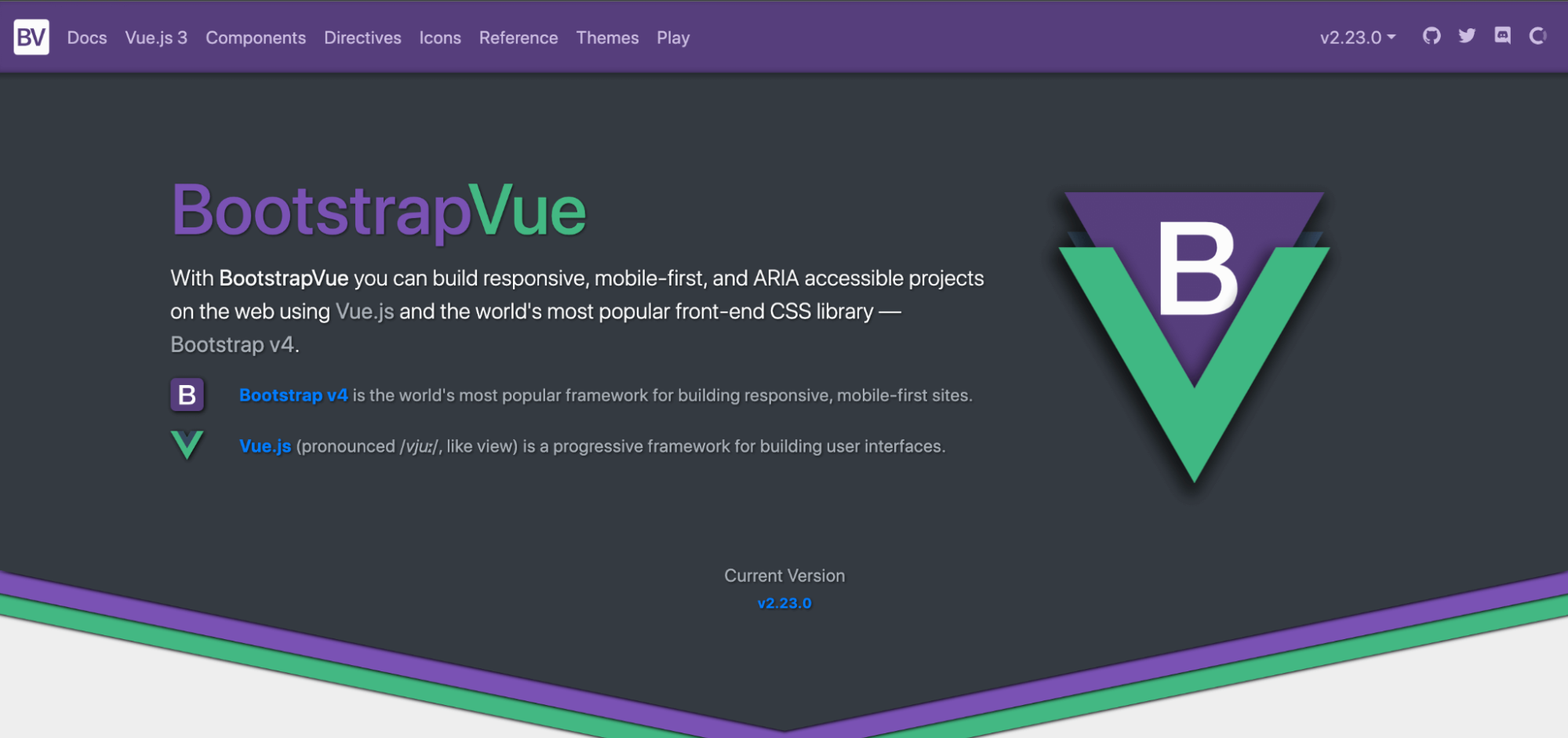
Bootstrap Vue’s tree-shaking support is one of its best features, boasting module bundlers like Webpack. Tree shaking eliminates unused code from an application, which can help reduce the size of an application’s bundle and improve performance. Bootstrap Vue enables this by importing only the components you need.
2. Vuetify
The component library Vuetify provides Material Design components for Vue applications. Google developed Material Design as a design language to unify user experience across different platforms and devices while emphasizing clean, modern, and intuitive design.
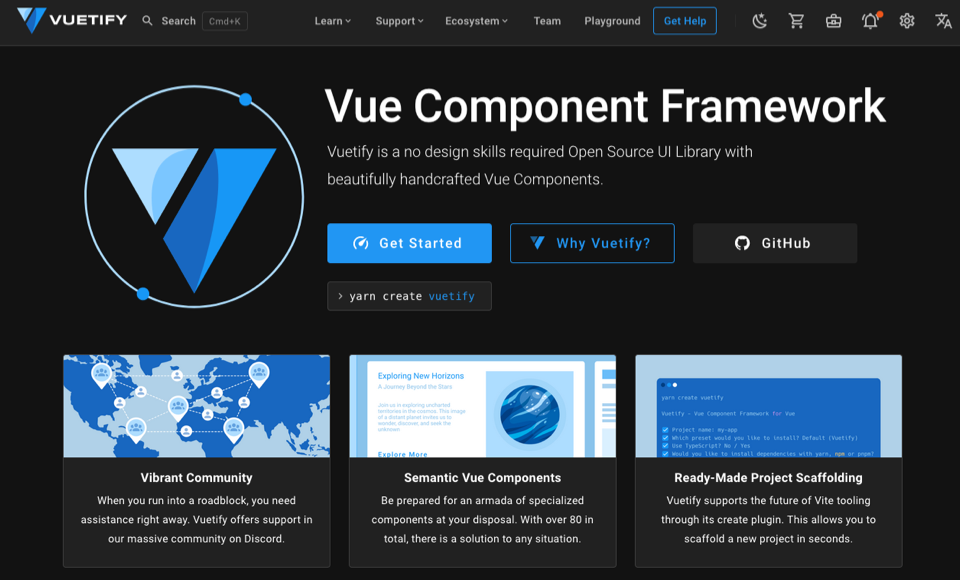
Vuetify has a wide range of components for users to import and use, as well as a large ecosystem of supporting tools. These tools include a Figma UI component kit and a command line tool that can scaffold Vue projects quickly with Vuetify installed. Vuetify also has a large and active Discord community, adding to the resources and support at developers’ disposal.
3. Vue Material
Vue Material is another component library that provides a collection of Material Design components.

Vue Material’s themes are one of its key features. These themes enable developers to easily customize the components’ colors and typography to match their own brand or design preferences.
4. Quasar
The framework Quasar provides Vue developers with a wide range of UI components, including components for forms, tables, and dialogs.
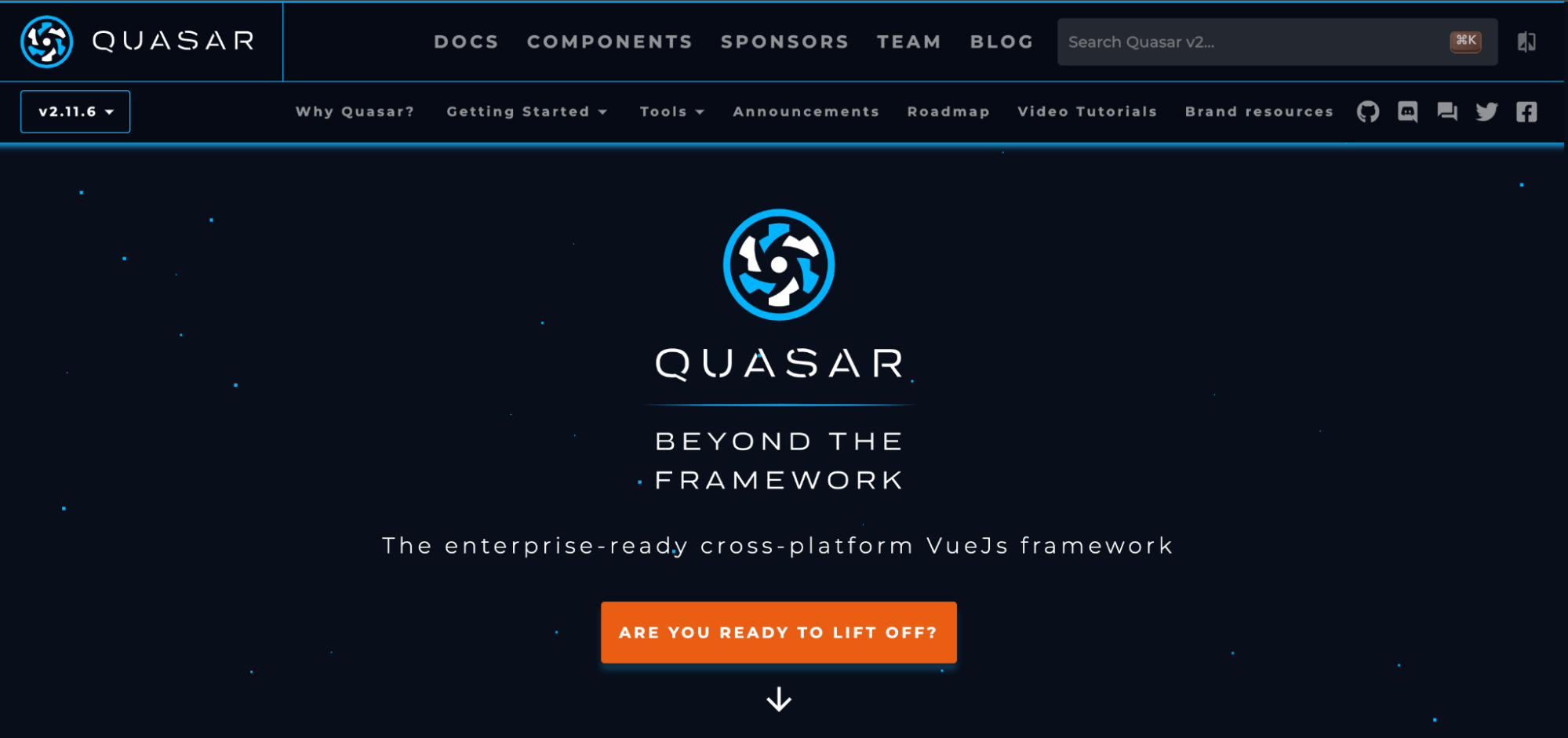
Quasar’s many benefits include a command line interface, automated testing capabilities, a large and active community, and a strong emphasis on component performance, which translates into components that render and update quickly.
One of Quasar’s key benefits, however, is its cross-platform nature. Quasar allows you to write code once and deploy it as a website, a mobile app, or even an Electron desktop app — all from the same codebase. This simplifies cross-platform development and deployment of your application.
5. Buefy
Buefy is a lightweight Vue component library built on the Bulma CSS framework. Buefy provides a set of components — forms, buttons, modals, and more — designed to work seamlessly with Vue.
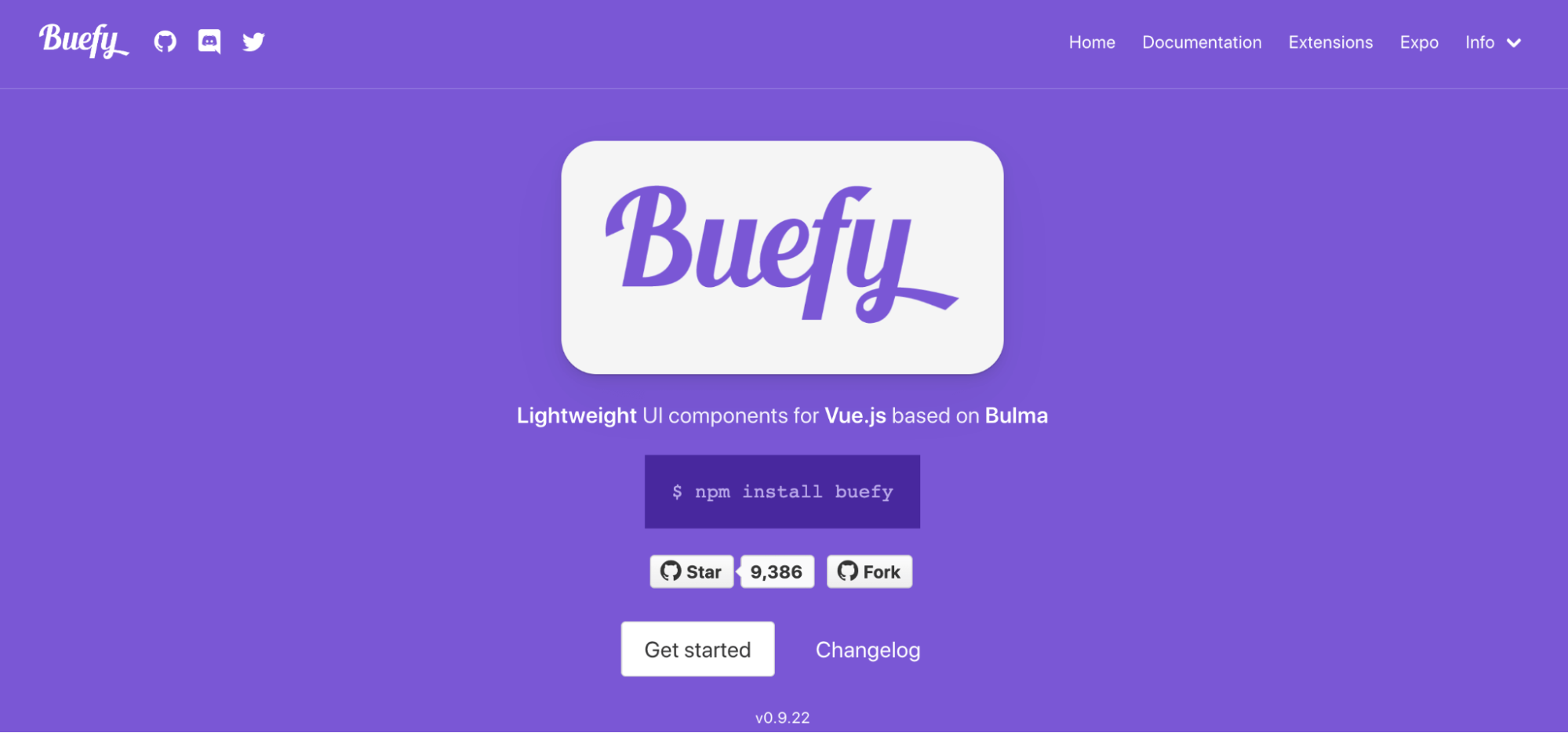
Buefy has no dependencies on tools other than Vue and Bulma, which makes the library incredibly lightweight. This makes Buefy an excellent choice for developers who want a clean and modern aesthetic in their web applications but can’t sacrifice performance.
One downside with Buefy is that it doesn’t currently support the latest versions of Vue — Vue 3+. If you intend to build a Vue 3 application or see yourself migrating to Vue 3 soon, you should probably consider other component libraries in this list over Buefy.
6. Vant
Popular Vue.js component library Vant provides a collection of mobile-first components and features for building responsive and performant mobile web applications.
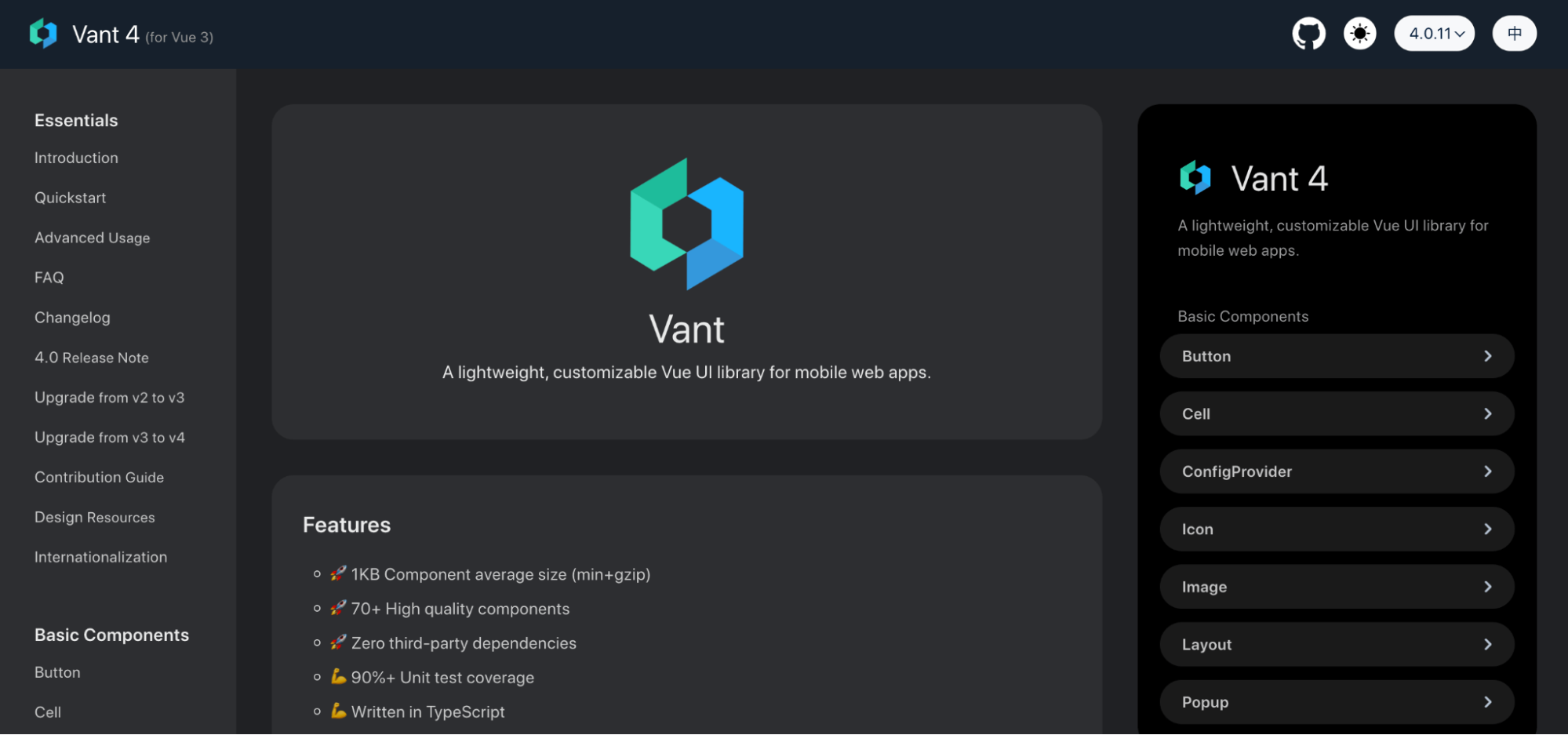
Vant has a useful laundry list of features and benefits. Perhaps most importantly, Vant’s components are designed with a focus on mobile devices and touch interactions. This makes it easier to create web applications that provide a seamless user experience on mobile devices.
7. Element Plus
Element Plus is a popular component library that provides a wide range of UI components for Vue 3 applications. Element Plus is a follow-up of the Element UI desktop library built for Vue 2 applications and includes components for forms, tables, buttons, modals, and more.
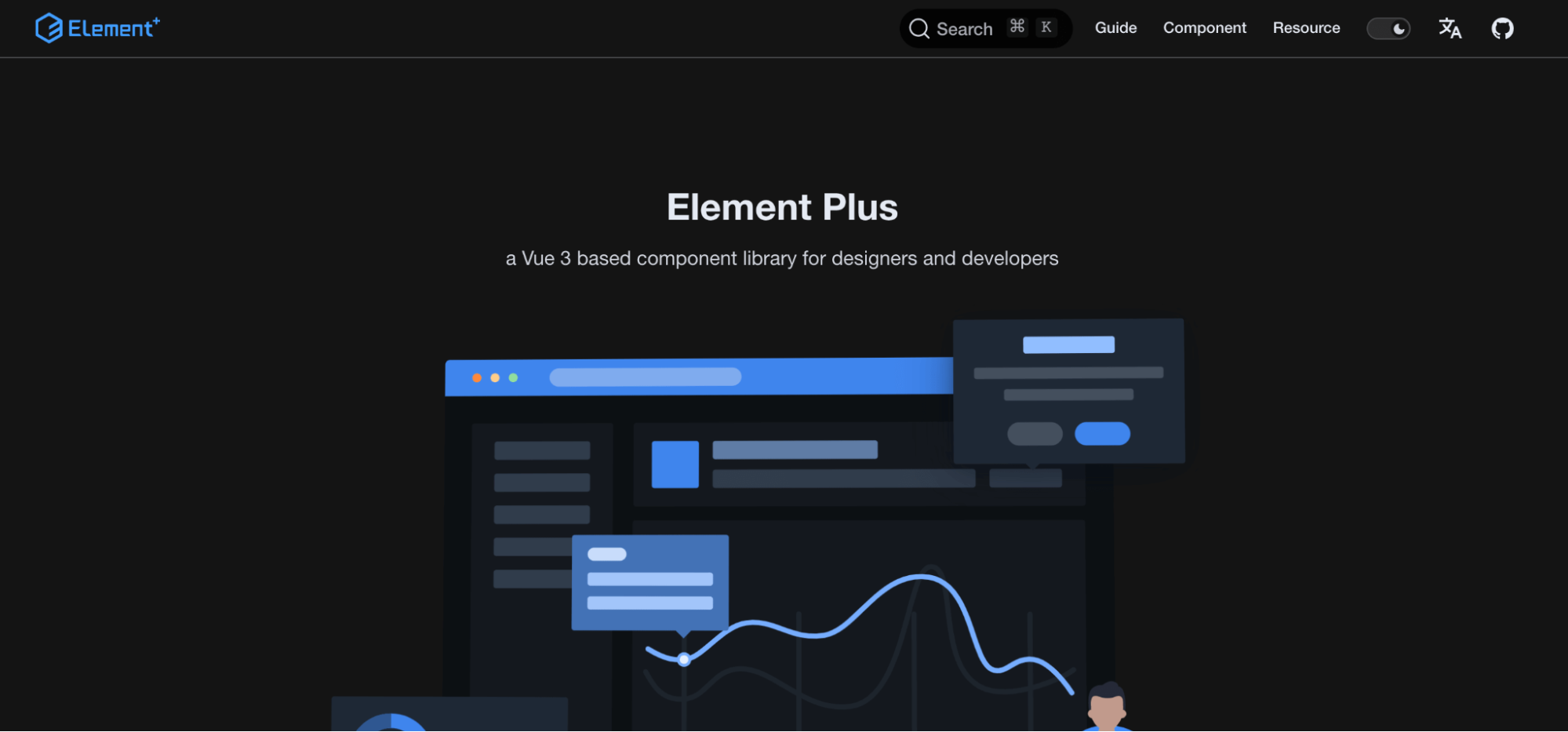
Element Plus is Vue 3 compatible, and its features include internationalization, theming, and dark mode support.
8. Ant Design Vue
Ant Design Vue is a framework that provides Vue developers with UI components and design resources. It’s built on top of the Ant Design framework, a popular UI library for React, and includes many robust components for forms, tables, modals, and much more.
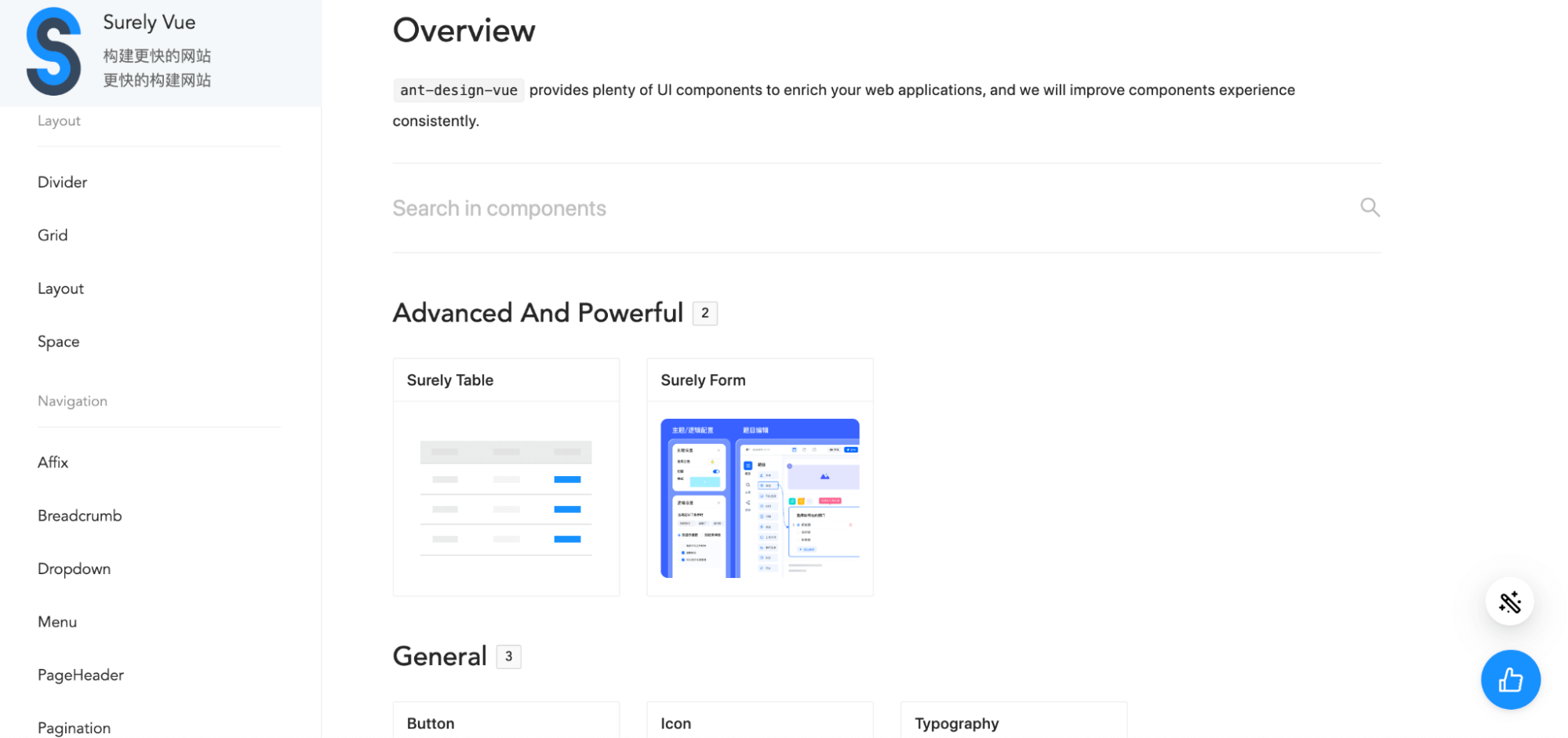
One of Ant Design Vue’s standout features is its extensive documentation, which is full of clear examples and detailed explanations. It also offers a rich set of customization options that allow you to tailor your application’s look and feel to your specific needs.
9. Vuestic UI
Versatile Vue component library Vuestic UI offers developers a broad range of UI components. With its visually appealing design and easy-to-use features, Vuestic UI is an excellent choice for building modern and stylish web applications.
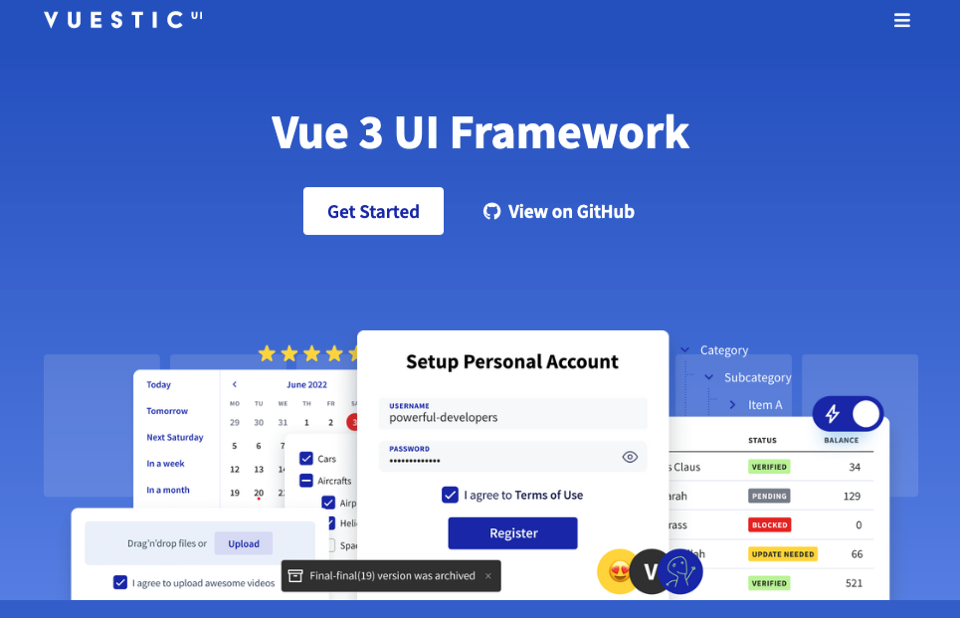
Vuestic UI is fully compatible with Vue 3 and supports internationalization. It emphasizes accessibility — for instance, by providing support for ARIA attributes and keyboard navigation — which makes it easy to build fully accessible user interfaces.
10. PrimeVue
PrimeVue is a robust Vue UI component library that offers a comprehensive suite of ready-to-use components, including forms, data tables, charts, overlays, and more.

PrimeVue’s main advantage is its extensive collection of components. With more than 90 components to choose from, developers have a broad range of options to suit their specific needs. PrimeVue also offers PrimeBlocks (a paid feature), which is a collection of templates built with PrimeVue components. PrimeBlocks are great for developers looking to avoid the time and labor cost of building their applications from scratch.
Vue and Kinsta Application Hosting
Kinsta’s Cloud Platform solution makes it easy to deploy and manage Vue applications.
Kinsta Application Hosting and Database Hosting can support your full-stack Vue applications, with deployment in minutes. Simply connect the hosted Git repository of your Vue project’s code and then deploy your application in a few clicks. This all happens in MyKinsta, the intuitive and user-friendly interface for developers who want to deliver applications quickly.
Summary
Vue has a large ecosystem of third-party component libraries and tools that help speed up Vue application development. Some of the libraries we’ve looked at in this article aim to help you meet specific goals.
For instance, Vant provides mobile-first components, and Quasar provides cross-platform components. Some libraries, like Buefy, are much smaller and lighter-weight than others. Other libraries, like PrimeVue, are more robust and come jam-packed with tooling.
Ultimately, your choice of component library depends on your specific project requirements and development preferences. No matter what project you’re undertaking, there’s a component library or framework that can help you achieve your goals with Vue.



Leave a Reply